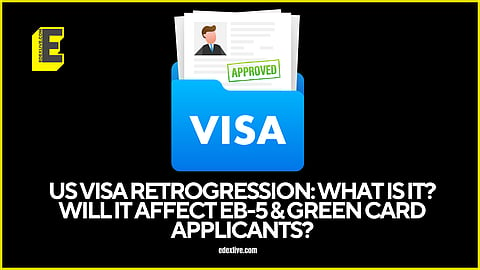

The United States (US) Department of State has published the April 2025 Visa Bulletin, revealing significant changes to employment-based (EB) immigrant visa categories.
The bulletin indicates that India will experience a retrogression of over two years in the EB-5 Unreserved category, while China will face a setback of about two and a half years. However, all other countries will remain current in the EB-5 category, according to the bulletin, as per Livemint report on Tuesday, March 11.
What is visa retrogression?
Visa retrogression happens when the US Department of State shifts the priority dates for visa availability backwards rather than forward in the Visa Bulletin, leading to delays for green card applicants.
A priority date is the date when an immigrant petition is received by the US Citizenship and Immigration Services (USCIS).
In essence, retrogression means longer waiting periods for green card applicants. Though temporary, it significantly extends the time applicants must wait.
Why does it occur?
The US has an annual cap on the number of immigrant visas or green cards it issues. Retrogression is implemented when the demand for visas from a specific country or category surpasses the allotted limit. As a result, even previously eligible applicants must wait longer for their priority date to become current again.
How does it affect visa applicants?
The impact of retrogression varies depending on whether an applicant is inside or outside the US. For those already in the US who have applied for a green card, their application process is paused until their priority date becomes current again.
For applicants outside the US, they are unable to schedule a visa interview until their priority date is current. However, if an applicant has already filed for a green card and obtained an Employment Authorization Document (EAD) or Advance Parole (AP), they can continue working while awaiting resolution. Retrogression does not mean an application is cancelled, it simply delays the process.
In February 2025, US President Donald Trump introduced a new residency and citizenship option, a “gold card” priced at $5 million. While the EB-5 programme has long been a favoured pathway for wealthy individuals seeking US green cards, some have raised concerns that the “gold card” initiative might replace it.
What is the EB-5 unreserved category?
The EB-5 Unreserved category refers to a segment of the EB-5 immigrant investor programme, which offers green cards to foreign nationals who invest substantial capital in US businesses that create jobs.
Since taking up office on January 20, 2025, President Trump has issued multiple immigration-related directives aimed at curbing undocumented immigration.
